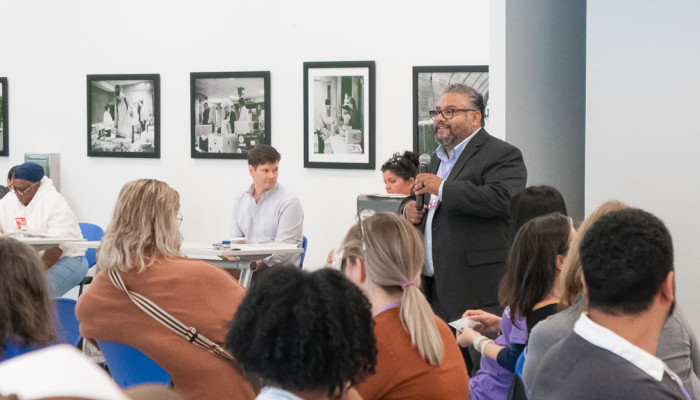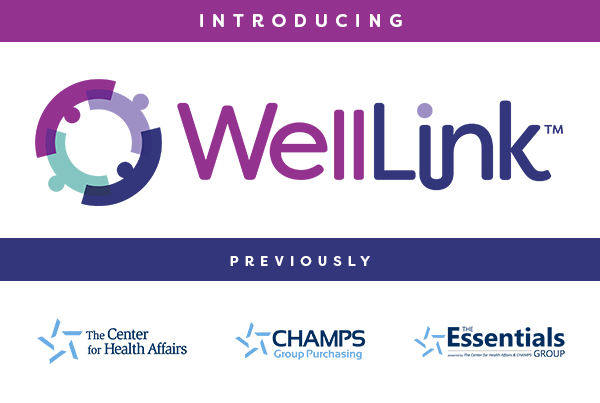How a Lived Experience Exercise Sparked Understanding During Hunger Action Month

On Sept. 25, WellLink Health Alliance partnered with Catholic Charities Diocese of Cleveland and the Greater Cleveland Food Bank to present a unique and deeply impactful event, “Lived-Experience Exercise: A Transformative Encounter with Poverty.”
Occurring during Hunger Action Month, this immersive exercise allowed participants to step into the shoes of families living in poverty, and to feel firsthand the weight of financial instability, hunger and the difficult choices that many people face every single day.
Designed to raise awareness, cultivate empathy and spark productive dialogue, the simulation helped attendees, many from the healthcare, nonprofit and social services sectors, deepen their understanding of how financial instability can affect every facet of daily life.
A Simulation Grounded in Real-Life Financial Struggles
The exercise was not a lecture or presentation, it was an active and emotionally engaging simulation. Participants were divided into small groups and asked to assume the identities of individuals and families living in poverty. Each person received a name tag, a family profile and a fictional, but realistic financial scenario.
These family scenarios were carefully designed to reflect the complex, interwoven challenges faced by low-income households. For example, one family might be made up of one working parent, one unemployed parent and two children, one with a chronic illness and the other pregnant. Another family might include a single parent, working part-time while caring for an elderly relative and juggling childcare.
Over the course of the exercise, every 15 minutes represented one week in a month. During each week, families needed to make real-world decisions like paying rent, attending work, buying groceries, applying for financial assistance, accessing childcare, and managing medical needs. This limited timeframe created urgency and forced participants to prioritize tasks, often sacrificing one necessity for another.
Participants who were assigned jobs had to go to work for the first seven minutes of each week, simulating the time and energy constraints of working while also needing to find time to care for children, attend medical appointments, determine how to pay bills, purchase transportation vouchers and complete any other vital tasks.
An eye-opening experience for all, the exercise mirrored the stress and exhaustion real families face when living in poverty while making decisions that impact the health of their families.
What the Simulation Can Teach Us About the Hidden Burdens of Poverty
As participants moved through the simulation, many gained an idea of the frustration and helplessness that often describes life for those living below the poverty line.
In Cleveland, 1 in 6 residents currently experience food insecurity, more than 424,000 unique individuals are served by the Greater Cleveland Food Bank, and 32% of the population of Northeast Ohio is eligible for food assistance at 200% or below the federal poverty guideline.
Those statistics reflect a need for understanding and support. While individuals experiencing poverty struggle to survive day-to-day, they also face the stigma associated with those financial hardships, including the misguided belief that poverty is a personal failure rather than a structural issue.
The simulation made it clear that poverty is not about poor decision-making. Hunger and poverty are deeply tied to social determinants of health — the conditions in which people are born, grow, live, and work that impact their health outcomes and quality of life.
Tackling these issues requires more than charitable giving, it requires collective action, policy change and a long-term investment in people.
A Transformative Step Toward Improved Community Health
By the end of the experience, participants walked away with more than new information; they walked away with a new perspective. What may have once seemed like simple or avoidable problems, now revealed themselves as part of a much larger, more complex web of systemic issues.
In a previous blog post on Hunger Action Month, we delved deeper into the structural barriers that can impact food insecurity, including economic policies, transportation, housing, legal, and infrastructure. These barriers reinforce one another in a persistent cycle that prevents dependable and affordable access to food.
At WellLink Health Alliance, our mission to transform the health of our community starts with an understanding of the lived realities of the people we serve. We are proud to work alongside organizations like the Greater Cleveland Foodbank and the Catholic Charities, and we remain committed to identifying and addressing the causes of poor health in Northeast Ohio, including those tied to poverty and hunger.
To learn more about WellLink Health Alliance’s mission and vision, visit www.welllinkhealthalliance.com.

